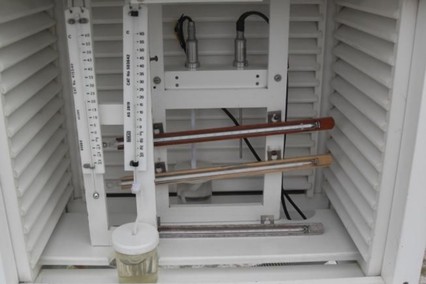Description
Meteorologists study the causes of particular weather conditions using information obtained from the land, sea and upper atmosphere. They use computerised and mathematical models to make short and long-range forecasts concerning weather and climate patterns.
The United States of America: $92,924 per year
Australia: AU$44,461 per year
While a bachelor's degree is sufficient for atmospheric scientists who predict and broadcast weather patterns, scientists who work in weather research need a graduate degree. Master's students typically take general courses in physics and atmospheric science, as well as specialization classes in a particular focus, like climate change, dynamics of atmospheric systems, or air pollution. The PhD in atmospheric science is required for college-level research and teaching positions. These programs require students to take classes in quantitative and qualitative research methods, as well as advanced physics and atmospheric science topics. Students develop a dissertation project in a particular meteorology specialization area, like chemistry and radiation, climate and weather, or space physics.
Tasks:
- Collecting data from satellite images, radar, remote sensors and weather stations all over the world;
- Measuring factors such as air pressure, temperature and humidity at various atmospheric levels;
- Analysing and presenting this information to customers in the form of weather briefings;
- Coding weather reports for transmission over international networks;
- Applying physical and mathematical relationships and sophisticated computer models to make short and long-range weather forecasts;
- Liaising with colleagues and clients from around the country and worldwide.
Key skills for meteorologist:
- Excellent mathematical and computing skills
- Good spoken and written communication skills
- Methodical approach to work
- Ability to analyse complex data
- Inquisitiveness
- Good problem-solving skills
- Interest in science and the environment
- Ability to work well as part of a team.
Average salary (2013):
The United Kingdom: £25,000 and £35,000 per yearThe United States of America: $92,924 per year
Australia: AU$44,461 per year
Qualifications and training required:
The most common way to get started in this career is to pursue an accredited bachelor's degree in atmospheric science. These interdisciplinary degrees require classes in atmospheric sciences, chemistry, physics, environmental science, math, and earth science.While a bachelor's degree is sufficient for atmospheric scientists who predict and broadcast weather patterns, scientists who work in weather research need a graduate degree. Master's students typically take general courses in physics and atmospheric science, as well as specialization classes in a particular focus, like climate change, dynamics of atmospheric systems, or air pollution. The PhD in atmospheric science is required for college-level research and teaching positions. These programs require students to take classes in quantitative and qualitative research methods, as well as advanced physics and atmospheric science topics. Students develop a dissertation project in a particular meteorology specialization area, like chemistry and radiation, climate and weather, or space physics.
Companies in profession
Best students in profession
Professions you might be interested in
Virtual internship
In our portal we are using cookies. Using the portal, you agree to the use of cookies. You can find out more!
Accept


